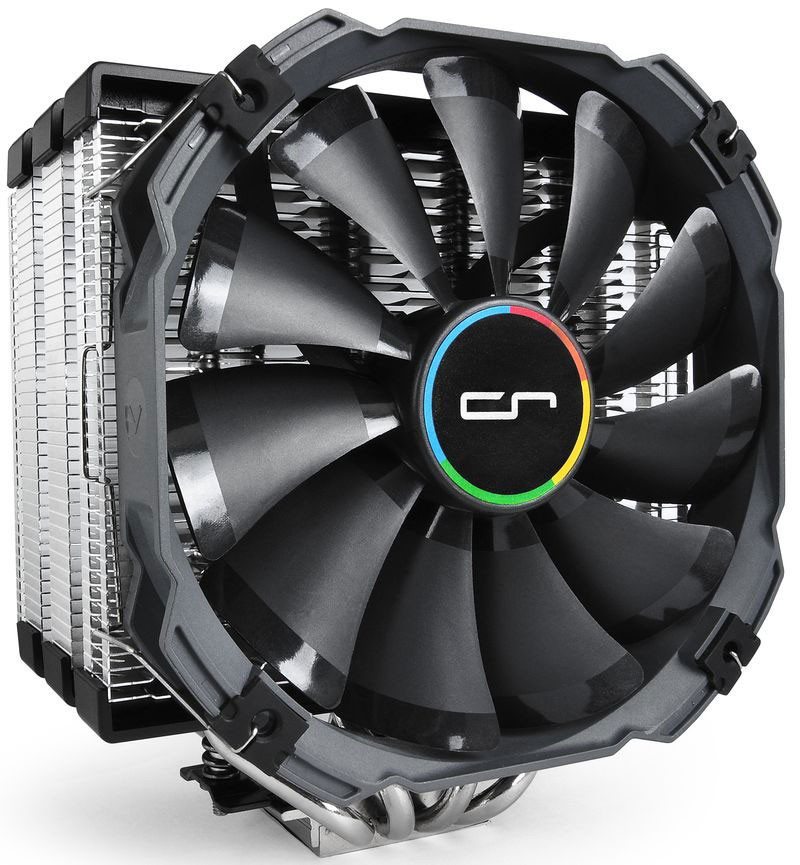CRYORIG Releases Official Statement Regarding Skylake PCB Concerns
John Williamson / 9 years ago

Intel’s Skylake architecture is built on the 14nm manufacturing process and utilizes a thinner structure compared to previous generations which can make the chip flex under high pressure air coolers. When we originally covered this story, there was some confusion about what high pressure actually refers to. Any flex or damage to Skylake CPUs is caused by hefty mounting hardware which pushes down onto the CPU with high pressure. It does not refer to liquid cooling with a high pressure pump. Nevertheless, this is a worrying development and seems to occur when a system is transported with the CPU cooler attached. As you might expect, manufacturers including Noctua, Rajintek, be quiet and more all conform to Intel’s recommendations. The latest company to clarify their position is CRYORIG, who sent a fairly length statement explaining the root cause and preventative measures they take:
“We at CRYORIG have the following information and statement to make, regarding the recent news and discussion regarding damaged PCB’s on Skylake CPU’s, which many in the industry believe is caused by abnormal heatsink mounting pressure during transportation of the PC system. First of all we want to assure users of CRYORIG products that currently no CRYORIG heatsinks have displayed this problem, either through media reports, third party sales channels or internal testing. CRYORIG heatsinks are fully compatible with socket 1151 processors, and follow specifications set forth by CPU manufacturers. But as a note of precaution we suggest users to lay their PC system flat (with the heatsink in a vertical position) whenever they are transporting their PC system.
Based on the information and testing reports we currently have at hand, although CRYORIG’s own products did not show this problem, we have derived the following suggestions and insight into the Skylake PCB damage problem. From our observation the cause of the bent/damaged PCB is caused by the combination of two factors.
A) High mounting pressure from the CPU heatsink mounting system, with no flexibility in the system.
B) Increased directional force created by the weight of the heatsink and movement of the PC chassis.In the cases that have been reported by media, it holds true that these issues have only been observed in “Pre-Built” systems. These systems have the heatsink installed before shipping, which are subjective to both point A+B. Thus if a heatsink already has high mounting pressure with no system of flexibility, heavy weight and is tossed around during shipping, then the force of the heatsink is possible to bend at the softest point. In this case the softest point is the Skylake PCB.
What makes CRYORIG heatsinks safe?
In our own product line we have two different mounting systems. First is the MultiSeg on our heavier products, then there is the X-Bar and MultiSeg Light. The MultiSeg Quick Mount System uses a sturdy Medium Carbon Steel backplate. We chose the Medium Carbon Steel for it’s high tensile strength, which protects the mainboard from bending when using heavier heatsinks like the R1 or H5. In combination with a highly rigid backplate, the spring screw system is what provides the downwards-clamping mounting force. This combination of a tough frame and a relatively softer point of flexibility is the key to why CRYORIG products are not seen damaging the CPU PCB. When extra vector/directional force is exhibited on the heatsink (such as during transport), the softest point in the system always gives. In this case the spring screws will deform to absorb the extra external force, much like a suspension system.
In our lighter products, the X-Bar and MultiSeg Light mounting systems omit the rigid steel backplate for a 30% Fiber Glass PBT. The lighter weight of our H7/M9 and C7 heatsinks creates less stress on the mainboard, which is why the steel backplate is not needed. Also, using a Fiber Glass filled PBT has multiple benefits.
Material Modulus of Elasticity (The Higher the more Rigid)
- 30% Fiber Glass PBT 15.0 GPa Max
- Medium Carbon Steel 213.0 GPa Max
The Modulus of Elasticity for 30% Fiber Glass PBT is 15.0 GPa, while Medium Carbon Steel is 213 GPa. The combination of structural support and elasticity, allows these backplate system to still have a point of flexibility when extra force is exerted. The lighter weight of the product itself also makes it safer when directional force is exhibited.
In all, although caution should always be exhibited when transporting delicate electronics, we want our consumers to feel safe about their CRYORIG product. Our finely tuned mounting kits are safe to use. Moreover, stationary PC’s do not have anything to worry about either.”
This is a very detailed and reassuring statement which helps to understand how the flexing process can occur. According to the research so far, all failures have occurred during transportation. As a result, it is recommend to remove the CPU cooler, or lay the system flat when moving the system.



















